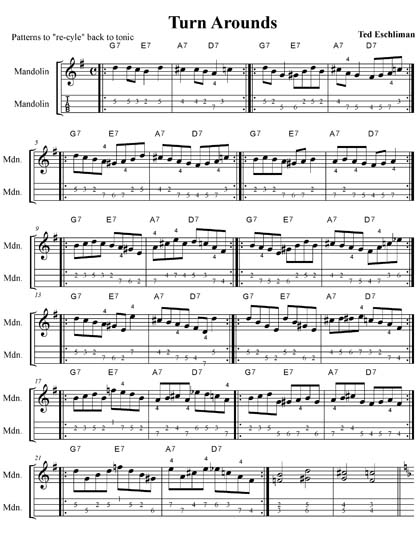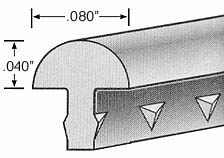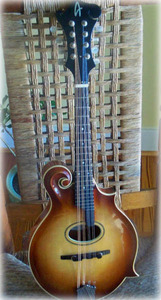« December 2011 |
Main
| February 2012 »
 January 26, 2012 | Deliberate Practice
January 26, 2012 | Deliberate Practice
Ever wonder why you put in the time but don't seem to be getting better? You slog through hours of the same drills and after months and assessment, you haven't achieved any higher degree of performance?
Some call this a plateau or a slump. It's pretty familiar territory for many, and believe it or not, there is a pretty simple way out of it, and it's not necessarily investing more hours. There's a great article in the Time Magazine website by Annie Murphy Paul that suggests it's not how much you practice, but how you practice. The key is being honest with diagnosing your failures.

Ryan McVay / Getty Images
Paul addresses this as deliberate practice. "It's not a minor change. The difference between ineffective and effective practice means the difference between mediocrity and mastery. If you're not practicing deliberately--whether it's a foreign language, a musical instrument or any other new skill--you might as well not practice at all." She suggests the key is rooting out weakness which is never pleasant for anybody. You develop a mindset of diagnosing and attacking mistakes, not mindlessly noodling through music, playing with the TV going in the background, and with nothing less than full concentration on what you may be doing poorly or wrong.
We don't like to do this, slow down the ugly parts and woodshed them, but that's what separates the average player from the great player.
"In an article titled 'It's Not How Much; It's How,' published in the Journal of Research in Music Education in 2009, University of Texas-Austin professor Robert Duke and his colleagues videotaped advanced piano students as they practiced a difficult passage from a Shostakovich concerto, then ranked the participants by the quality of their ultimate performance. The researchers found no relationship between excellence of performance and how many times the students had practiced the piece or how long they spent practicing. Rather, 'the most notable differences between the practice sessions of the top-ranked pianists and the remaining participants,' Duke and his coauthors wrote, 'are related to their handling of errors.'
The best pianists, they determined, addressed their mistakes immediately. They identified the precise location and source of each error, then rehearsed that part again and again until it was corrected. Only then would the best students proceed to the rest of the piece. 'It was not the case that the top-ranked pianists made fewer errors at the beginning of their practice sessions than did the other pianists,' Duke notes. 'But, when errors occurred, the top-ranked pianists seemed much better able to correct them in ways that precluded their recurrence.'"
What do you put more effort into, what you do well or what you do poorly? It's not easy admitting your mistakes, and we use the excuse of "just playing for enjoyment" as a crutch for not getting better. There's nothing wrong with this, unless you sincerely want to get better. Best thing you can do is get a pencil and identify passages you struggle with in parenthesis. That physical act and the follow up polishing will help you nail not only that passage, but help you overcome the obstacles in it that will be repeated in other incidents of music.
This kind of practice puts you on the path to a whole new level of ability.
Read article: The Myth of 'Practice Makes Perfect'
Further:
The Regressive Method
Drilling for tone
How we learn
Thin-slicing and Music Theory
Inner Game of Tennis
Posted by Ted at 8:39 AM
 January 19, 2012 | Playing musically: Part 3, play with direction
January 19, 2012 | Playing musically: Part 3, play with direction
Enjoy the popular archive material below.
From January 29, 2009: "Playing musically: Part 3, play with direction"
Last time we discussed playing with harmonic intent. Defining the vertical (harmonic) structure of the song, emphasizing corresponding chord tones tells the listener even on an intuitive level you know what you're doing. The next step is to think how these chord tones are connected melodically, or linearly.
In a very early Mandolin Sessions article, we described what we like to call "Gravity Notes" (see April 2004). These are also sometimes called "Approach Tones," but the concept is the same. It differs from "Passing Tones" in that it's one notch higher on the "intent" meter. In other words, passing tones are like child riding a bike in the park. "Gravity Notes" are like a professional courier riding a bike in urban traffic; there is an aesthetic purpose to get somewhere.

When you look closer at the major scale as we did in the article mentioned, there are two relationships that are heavier on melodic "pull." Inarguably, the 7th scale degree longs for the 8th (or 1st) in the tonic key. The next pull is the 4th scale degree that wants to go done to the 3rd. Don't miss the fact that these are the only half step relationships in the scale. That's significant in your ear, and it will also be on your fretboard.
Outside of the major scale you can find other similar pulls. How about the flatted 9th? Play an A minor chord and then play a single note Bb. Some tension in need of resolution? How about playing the blues, the raised 4th (b5) has some arguably angry issues to deal with, too. Between that and the play between the Major 3rd and Minor 3rd, the blues vocabulary has quite a story to tell. (And it's not just about girlfriend leaving, boss firing you, or the Cubs losing the pennant.)
Tension/Resolution is the great drama and dialogue of Western music forms. Respect these in your improvisation and use them to weave in and out of implied chord backgrounds. You'll be writing your own musical script!
Further:
Some Minor issues: Seeking Resolutions
In the Mode: Easing into Modal Jazz
Three Four Pull: Foregoing the Fourth Finger Frack
IMPROVISATION: PATTERN BASED VS. THEORY BASED
Posted by Ted at 4:48 AM
 January 12, 2012 | Turnarounds and melodic intent
January 12, 2012 | Turnarounds and melodic intent
We've discussed the concept of theory vs. intuition in improvising before. There's a continuum in the approach to how to create melody starting on one side with calculation of formulaic scales, modes and arpeggios and reaching the other side with blind, reckless intuitive spontaneity.
Just blow.
In the middle somewhere, there's the notion of taking and bending a melodic nugget. Call it a lick, a motif, a riff, you have a familiar sequence of notes that you reproduce, transposing and manipulating on different sections of the fretboard. There's spontaneity, but you still have a long leash on altering time, adding and subtracting notes, and any other aesthetic edit your inner Muse should choose to throw out there.
"Turnarounds" are great field research for how you can take a set of notes and wrap some cognition into the process. Identifying the notes in these little 3 and 4 chord patterns can give you some direction that supports and communicate the vertical (chord) structure of the horizontal (melody). The notes that change are the notes that identify the chord and propel into the next. (If you've not heard this term, we've got some past articles in the links below that can elaborate.)
In the Getting Into Jazz Mandolin book, we've got some extended exercises to help you develop some insights into zeroing in on the notes of the chord as you blow through them. It's a concentrated look, and one you can apply to larger sections of songs, too, especially progressing through the Circle of Fifths. We'll give you an example in the PDF below, but as usually, we'll plug getting the book to really go deep.
Enjoy!
 Sample Turnaround Patterns for drilling Sample Turnaround Patterns for drilling

Further
Blues 501 (Jazz!)
Applying Turnarounds
Another look at Turnarounds
Webtracks
Improvisation: Pattern-based vs. Theory-based
Posted by Ted at 2:09 PM
 January 5, 2012 | Fret not
January 5, 2012 | Fret not
We're in the process of a refret job on recently acquired Arrow F4 mandolin. The instrument was well loved, frets worn in spots, but the instrument was created with a more traditional fretboard, with scooped extension and unfortunately, thin frets.
 Fret preference is very much an individual taste. The bluegrass traditionalist is probably going to lean toward the thinner, lower crown, and that's fine for open droning and fast, imprecise speed. We lean toward a beefier, more pronounced crown that defines tone and zeros in on pitch faster. You can find many intelligent discussions on this in the Mandolin Cafe Forum from some of the industry's premier builders, and it was there we ran across world renown luthier Paul Hostetter's spec sheet from his luthierie.net site. He maps out an extensive list of available sizes there. Fret preference is very much an individual taste. The bluegrass traditionalist is probably going to lean toward the thinner, lower crown, and that's fine for open droning and fast, imprecise speed. We lean toward a beefier, more pronounced crown that defines tone and zeros in on pitch faster. You can find many intelligent discussions on this in the Mandolin Cafe Forum from some of the industry's premier builders, and it was there we ran across world renown luthier Paul Hostetter's spec sheet from his luthierie.net site. He maps out an extensive list of available sizes there.
 Mandolin Mandolin
"I keep about 20 different wires for different applications, but for mandolins I use mostly the old Dunlop 6280 (seen in both charts above and below) or the Dunlop 6230 mentioned above. I'm keeping my old 6280 for partials now, and am moving to Jescar's 43080 (in EVO). Stew-Mac's 147 and 148 wires are also hard to beat.
The typical Gibson mandolin fret, at .034" wide and .032" tall when new, is, to me, absurdly small. Most (though not all) of the serious pro players in my mandolin clientèle prefer much heftier ones, such as the Dunlop 6230 or the lamentably extinct Dunlap 6280 (it was really close to 1930's Gibson guitar frets). The old Dunlop 6280 was .076" wide by .044" tall. I wish it was still available, I like that size better. Both are about the same height, but the 6230 is a tad wider and feels different. Jescar makes a wire that seems to have all the answers though, their 39040 (in either 18% NS or stainless), it's .039" tall by .040" wide. That's practically half-round. For folks who prefer really narrow wire, as in the days of yore, I use Dunlop 6310.
Stew-Mac wires are made in Japan and are a bit harder than the Dunlop wire. And some by Jescar, made in Germany, are different than anything offered by the other people. With the exception of stainless, which I don't care for at all, the bigger and/or harder the wire, the more trouble it is to install, but the longer it will last. I believe it's worth the effort."
View chart graphic.
Thinking about changing your instrument? A refret job is not uncommon on instruments well-played over the years, even the highest calibre mandolin. The reality is simply, they wear out. if you are considering changing fret width in the process, obviously you'll want to try other instruments first to make sure this is right for you.
Further:
Another look at Flying Fingers
Fear of flying
Let's review. Why Closed Fingerings again?
Mods Royale
Posted by Ted at 9:39 AM

Disclaimer: In the 'Information Age' of the 21st Century,
any fool with a computer, a modem, and an idea can
become a self-professed 'expert." This site does not
come equipped with 'discernment.'
|



